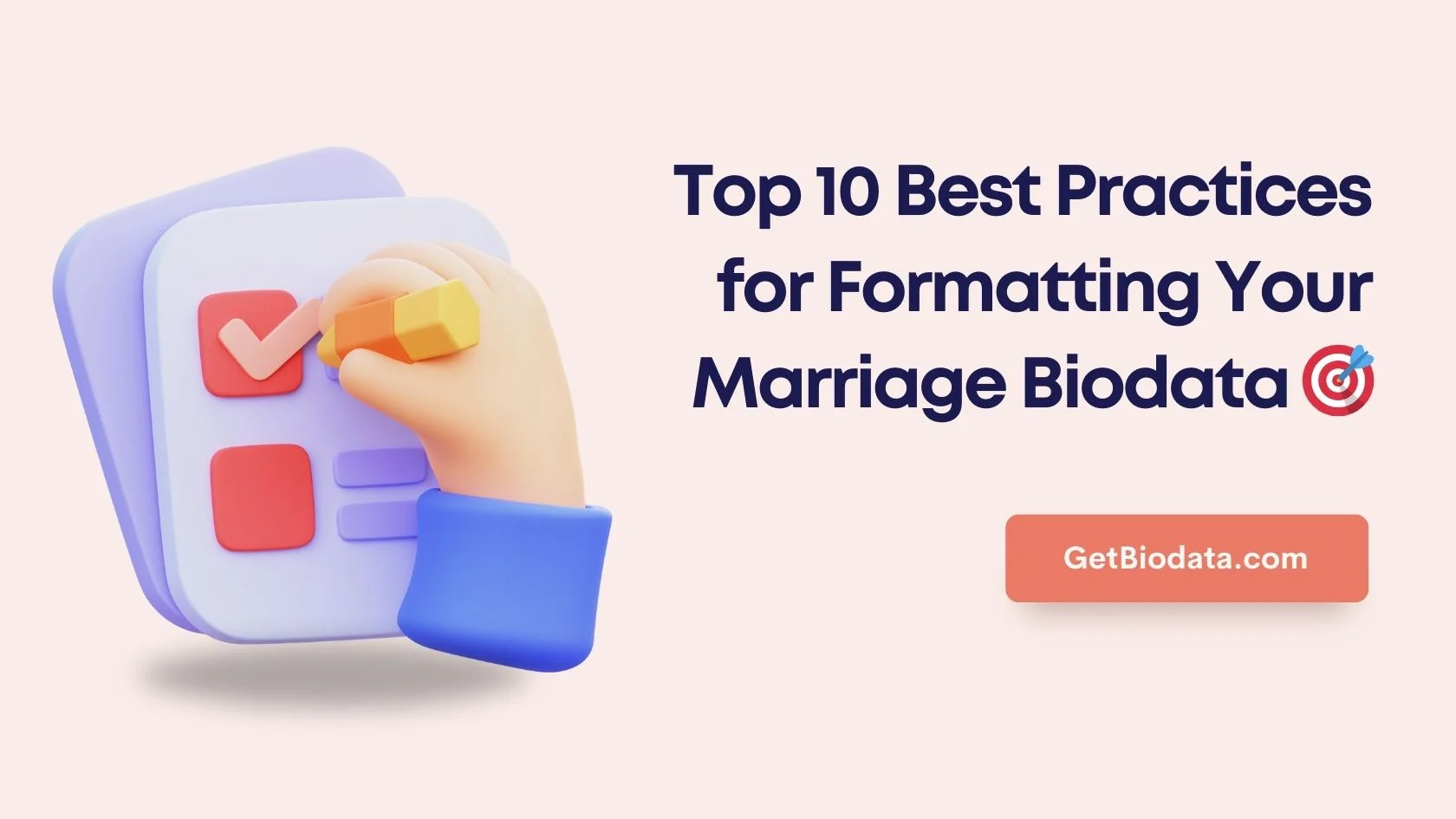Your marriage biodata is the first impression you make on potential matches and their families. With the right formatting, your biodata can showcase the best of you.
In this blog post, we will discuss the best practices for formatting your marriage biodata, ensuring it is both visually appealing and easy to read.
- 1. Choose a Simple and Clean Layout
- 2. Select an Easy-to-Read Font
- 3. Maintain Consistency in Font Sizes and Styles
- 4. Use High-Quality Images
- 5. Create a Table for Key Information
- 6. Make Use of White Space
- 7. Highlight Important Text
- 8. Keep The Biodata Concise
- 9. Proofread Your Biodata
- 10. Customize Your Biodata for Different Audiences
- Conclusion
1. Choose a Simple and Clean Layout
A marriage biodata with a clean and simple layout is easy to navigate and less overwhelming for readers.
Tip: Use clear headings, bullet points, and paragraphs to break the content into easily readable sections.
2. Select an Easy-to-Read Font
Readability is crucial when formatting your marriage biodata. Choose a font that is easy on the eyes and legible in various sizes.
Tip: Stick to professional, standard fonts like Arial, Times New Roman or Calibri.
3. Maintain Consistency in Font Sizes and Styles
A consistent font style and size create a sense of harmony throughout your biodata. Stick to cohesive formatting for subheadings, main text, and bullet points.
Tip: Use slightly larger font sizes for headings, but avoid using overly bold or cursive styles that might be hard to read.
4. Use High-Quality Images
A clear, high-quality photograph is essential for your biodata. A well-lit and appropriately cropped picture can make an excellent first impression.
Tip: Choose a recent photo with minimal background distractions and ensure the resolution is suitable for printing or digital sharing.
5. Create a Table for Key Information
A neat table can be an efficient way to present crucial information like age, height, and educational background.
Tip: Create a compact table with 3-4 columns to quickly display your personal details.
6. Make Use of White Space
White space helps create a clean and visually appealing design, making it easier for readers to locate and absorb information.
Tip: Avoid overcrowding the page with text, and use adequate margins and spacing between sections.
7. Highlight Important Text
Draw attention to the most crucial elements in your biodata by using different font weights or styles for emphasis.
Tip: Bold or italicize the subheadings and any particularly important details, but use these effects sparingly.
8. Keep The Biodata Concise
Avoid overwhelming prospective matches with too much information. Keep your biodata focused, and present the most important details about yourself.
Tip: Limit your biodata to 1-2 pages, ensuring that each section conveys essential details without being too lengthy.
9. Proofread Your Biodata
Spelling and grammatical errors can create a poor impression. Ensure your biodata is error-free to convey professionalism and accuracy.
Tip: Read your biodata multiple times or have someone else review it for any unintentional errors.
10. Customize Your Biodata for Different Audiences
It’s essential to create a perfect marriage biodata that caters to the preferences and expectations of your target audience, respecting cultural sensitivities and individual priorities.
Tip: Consider customizing your biodata to address the specific preferences of various prospective matches or communities.
Conclusion
Your marriage biodata serves as a reflection of you and sets the stage for further interactions with potential life partners.
By adhering to the formatting best practices outlined above, you can create a visually appealing and easy-to-read biodata that efficiently showcases your qualities and values.
Remember, simplicity, consistency, and attention to detail are the keys to creating an impactful marriage biodata that can pave the way to a fruitful and promising alliance.
Recent Blog
-
How to Write a Marriage Biodata: A Complete Guide
-
12 Essential Elements to Include in Your Marriage Biodata
-
Top 10 Fatal Mistakes to Avoid When Creating Your Marriage Biodata
-
10 Best Practices to Format Your Marriage Biodata The Right Way!
-
How to Make Your Marriage Biodata Stand Out?
-
Understanding the Role of Biodata in Indian Marriages
-
How to Tweak Your Biodata to Suit Different Cultural Expectations?
-
How Sarah Made Her Marriage Biodata Attention-Grabbing with Getbiodata
-
A Successful Journey of Creating an Impressive Biodata with Getbiodata
-
Use These 10 Unique Features to Elevate Your Marriage Biodata


